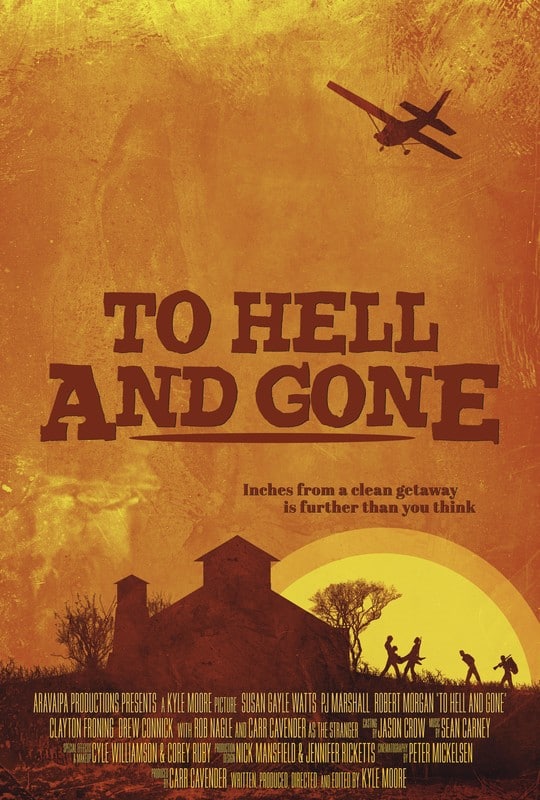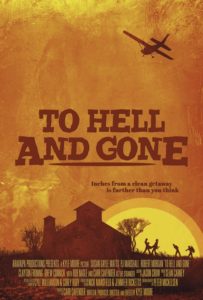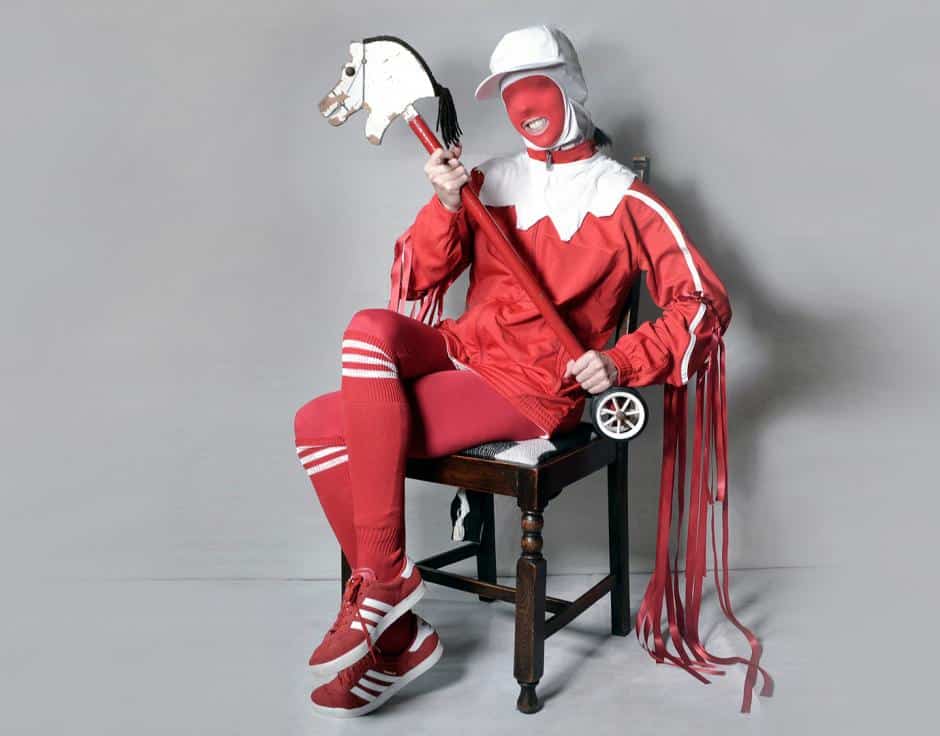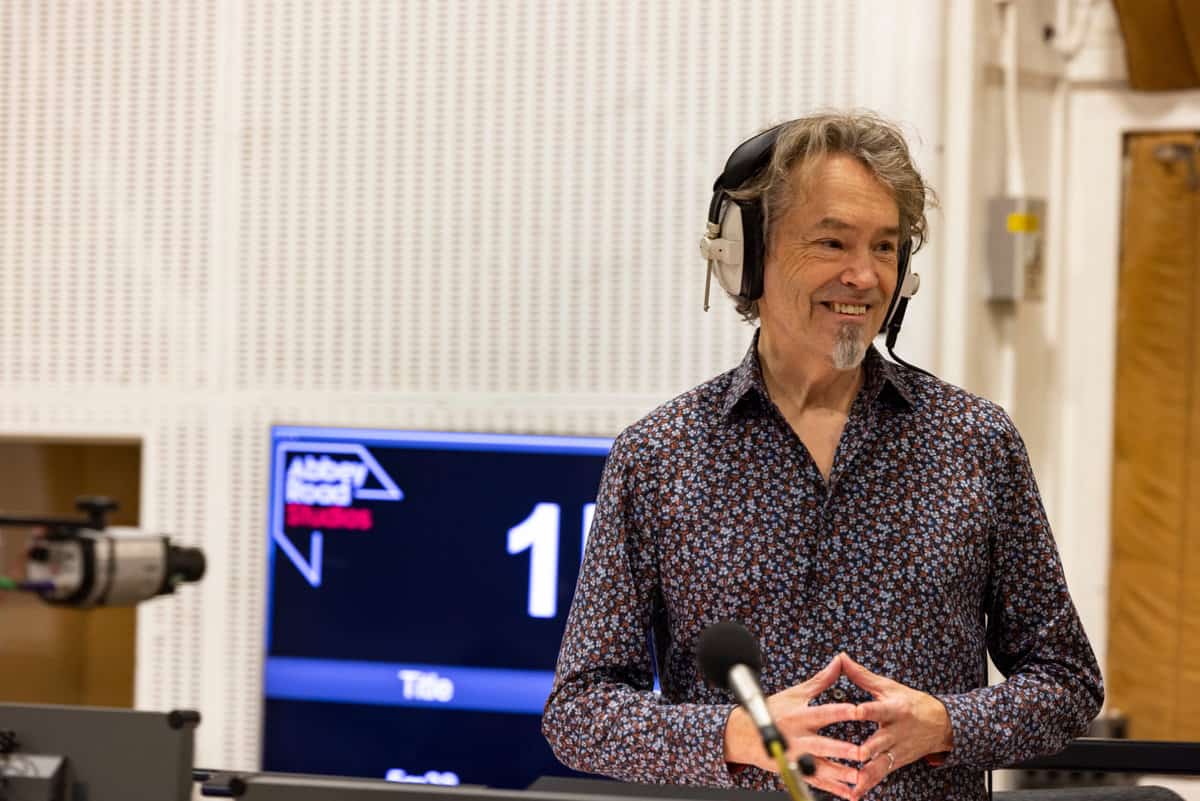
I recently had a chance to talk with musician Sean Carney in my first-ever video interview (an uncut video is available here). A jazz vocalist, touring guitarist, and member of the bands WOLVES and Miscellaneous, Sean has recently released his first feature-length film score for the Neo-Western To Hell and Gone.
Creating To Hell and Gone
After some initial chit chat, Sean asked me almost immediately what I thought about the film (both good and bad). The directness of the question (turning the interview around on me!) caught me off guard. I told Sean that the high production quality and on-location shots were the biggest surprise. In response, Sean told me the film “was all shot on location in Arizona.” He continued, saying that the director, “Kyle Moore, went out to Arizona to visit a really good friend, Carr Cavander, who produced the movie as well. Carr has this big ranch property out in the middle of nowhere […] and Kyle went out there on a trip just to check it out and fell in love with the location.”
As a screenwriter “hobbyist” this approach intrigued me since it seemed to run counter to the filmmaking and screenwriting norms I was used to. Rather than start with a script, Moore and Cavander “backwards engineered the movie based on the location.” A novel approach! Others may have resisted this method but it clearly worked out, allowing them to stretch their modest budget.
Sean’s Composing Process and Influences
I was curious about how Sean approached To Hell and Gone given that it was his first foray into feature film scoring. Most composers develop a process with which they work on films, but Sean clearly wouldn’t have had that luxury yet. When I asked, he told me that his approach “was just all wrong, just totally wrong, everything I started was just all wrong. I had to figure out my own personal workflow and organization system on the technical side, on the creative side, everything, and it took a while to get into the groove. And I did some things at the beginning where I’m like ‘why did I do that?’ I just wasted so much time, but it was great.”
I didn’t expect that level of bluntness and self-deprecation; the honesty was refreshing! It was also a surprise given how coherent and good the score turned out.
From listening to the score and watching the film, it was clear that Sean was influenced by Spaghetti Westerns and, most likely, Ennio Morricone. But, before I could raise the question Sean preempted me, saying “[w]e wanted the score to have some of those Spaghetti Western elements going on but with a more modern-day twist to it.” He continued, “I definitely went back to Ennio, The Good, the Bad and the Ugly, one of the best film scores of all time. It’s such a weird score, it’s so strange, the instrumentation of it, the use of vocals as well, it’s just like ‘what the hell are you doing, what are you on right now?’ it feels like a peyote trip, the whole thing.”
But the film also heavily uses electronic elements, particularly as a motif for its antagonists. Once again, as if I were a detective hearing an unprompted confession, Sean told me the genesis of these aspects before I could even ask. “The Breaking Bad score was something I listened to for inspiration. And that was actually something Kyle, the director, and I discussed beforehand, and it’s got this, I don’t know, this electronic kind of thing to it and it also has a tribal or native kind of flavor to it that ties the story together so brilliantly. And just the way that score was approached in a modern-day setting was really interesting to have.”
While Sean was obviously enthusiastic speaking about the production-side of the film, his enthusiasm grew and grew as he spoke about the score. This made my role in the interview rather easy – the slightest of prompts revealed a trove of information about Sean’s creative process. As before, he spoke about a third aspect of the score before I could ask.
“I did some research about the Native American tribes around there to try to incorporate some of their music. Especially in that region of Arizona as well because some of the Spaghetti Westerns draw from the California Native American tribes so I wanted to grab some stuff that people wouldn’t really hear in a Western and kind of make it more specific to that region.”
This was the most interesting piece of information about the score to me. I’d noticed certain instruments, particularly the percussion, that sounded unique and that I couldn’t quite identify. That they were regional instruments solved this riddle. They also helped authentically ground To Hell and Gone in its location.
Sean then summed the score up as “basically just Breaking Bad meets Ennio Morricone.” I don’t think I could have put it much better – or more succinctly.
He left with this advice for any fledgling composers looking to broaden their audience: “take these opportunities to talk about your score, about your project, about your music, or else nobody knows.”
To Hell and Gone is currently out on VOD and Sean’s score is available on all major streaming services. More information about Sean is available on his website. Listen below:




❤️